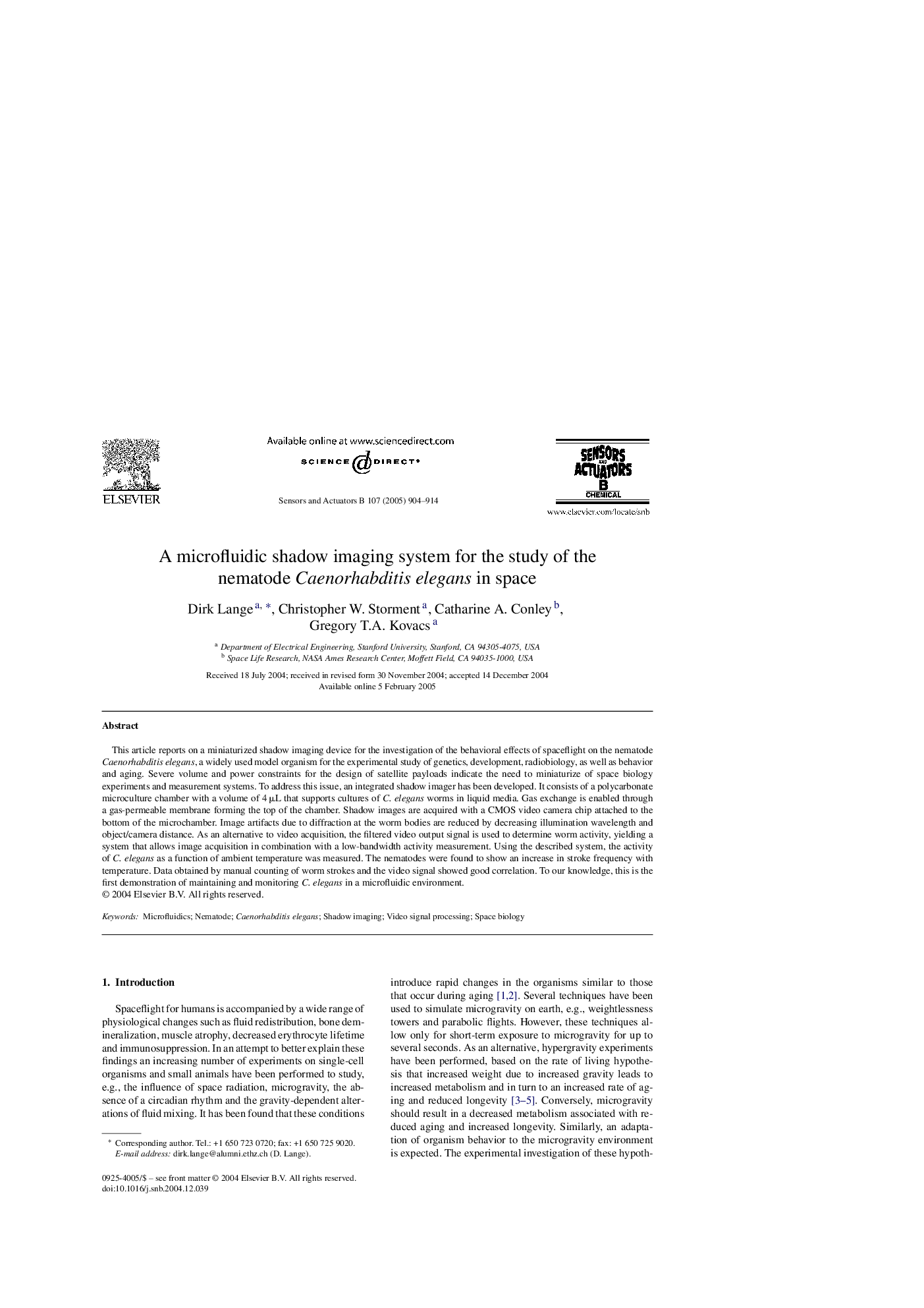| Article ID | Journal | Published Year | Pages | File Type |
|---|---|---|---|---|
| 10410935 | Sensors and Actuators B: Chemical | 2005 | 11 Pages |
Abstract
This article reports on a miniaturized shadow imaging device for the investigation of the behavioral effects of spaceflight on the nematode Caenorhabditis elegans, a widely used model organism for the experimental study of genetics, development, radiobiology, as well as behavior and aging. Severe volume and power constraints for the design of satellite payloads indicate the need to miniaturize of space biology experiments and measurement systems. To address this issue, an integrated shadow imager has been developed. It consists of a polycarbonate microculture chamber with a volume of 4 μL that supports cultures of C. elegans worms in liquid media. Gas exchange is enabled through a gas-permeable membrane forming the top of the chamber. Shadow images are acquired with a CMOS video camera chip attached to the bottom of the microchamber. Image artifacts due to diffraction at the worm bodies are reduced by decreasing illumination wavelength and object/camera distance. As an alternative to video acquisition, the filtered video output signal is used to determine worm activity, yielding a system that allows image acquisition in combination with a low-bandwidth activity measurement. Using the described system, the activity of C. elegans as a function of ambient temperature was measured. The nematodes were found to show an increase in stroke frequency with temperature. Data obtained by manual counting of worm strokes and the video signal showed good correlation. To our knowledge, this is the first demonstration of maintaining and monitoring C. elegans in a microfluidic environment.
Related Topics
Physical Sciences and Engineering
Chemistry
Analytical Chemistry
Authors
Dirk Lange, Christopher W. Storment, Catharine A. Conley, Gregory T.A. Kovacs,
